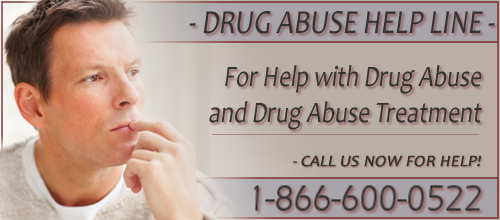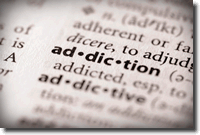About Drug Abuse
- Signs of Drug Abuse
- Causes of Drug Abuse
- Teen Drug Abuse
- Effects of Drug Abuse
- Prescription Drug Abuse
- Facts About Drug Abuse
- Drug Abuse Statistics
- Drug Abuse Counseling
- Drug Abuse Treatment
- Drug Abuse Information
- Preventing Drug Abuse
- Help for Drug Abuse
- Drug Abuse vs Drug Addiction
- Dangers of Drug Abuse
- Drug Abuse Recovery
- Drug Abuse in America

Drug Abuse Information
 Drug abuse information can help put an end to a loved one’s drug abuse problem. Parents, spouses, and friends are quite often unaware of their loved ones escalating drug abuse problem. Drug abuse is defined as the habitual use of any chemical substance to alter the state of one’s body or mind for reasons other than medically warranted purposes. Drug abuse is a problem that affects men and women of all income levels, ages, and stations in life.
Drug abuse information can help put an end to a loved one’s drug abuse problem. Parents, spouses, and friends are quite often unaware of their loved ones escalating drug abuse problem. Drug abuse is defined as the habitual use of any chemical substance to alter the state of one’s body or mind for reasons other than medically warranted purposes. Drug abuse is a problem that affects men and women of all income levels, ages, and stations in life.
Drug abuse information shows that the effects of drug abuse vary depending upon the drug that is used. Some drugs effects users by producing powerful rushes of energy. Other drugs may induce excessive feelings of calm and relaxation. Drug abuse may involve prescription drugs used for pleasure rather than for medical reasons or the use of illegal drugs known as street drugs. Remember, drugs alter the brain to the point where not having the drug becomes extremely uncomfortable and even painful. This compelling urge to use is what leads many drug abusers into drug addiction.
Drug Abuse Information: The Stages of Drug Use
- Experimental use -- typically involves peers; done for recreational use; the user may enjoy defying parents or other authority figures.
- Regular use -- the user misses more and more school or work; worries about losing drug source; uses drugs to "fix" negative feeling; begins to stay apart from friends and family; may change peer group to others who are regular users; takes pride in nothing; increased tolerance and ability to "handle" the drug.
- Daily preoccupation -- the user loses any motivation; the user is indifferent toward school and work; behavior changes become obvious; preoccupation with drug use overrides all prior interests, including relationships; the user engages in secretive behavior; may begin dealing drugs to help support habit; use of other, harder drugs may increase; legal complications may increase.
- Dependence -- cannot face daily life without drugs; denial of problem; worsening physical condition; loss of "control" over use; may become suicidal; financial and legal complications worsen; may have severed ties with family members or friends by this time.
People who are most likely to become involved in drug abuse are those unable to make common transitions in life and are looking for a superficial way to mask their feelings or mentally escape their reality. Drug abuse information reports that communities could make a real difference to help prevent drug abuse amongst young people if they simply created programs aimed at helping children transition from grade level to grade level. Moreover, adults experiencing difficult transitional periods such as divorce or unemployment for example, would greatly benefit from programs designed to help prevent drug abuse by helping them adapt to their situation and provide solutions for coping with stress.
The National Survey on Drug Use and Health, an annual survey conducted by the Substance Abuse and Mental Health Services Administration (SAMHSA), estimates the prevalence of drug abuse in the United States. Some of the more notable drug abuse information statistics from the 2004 study follow.
- About 22.5 million Americans aged 12 or older in 2004 were classified with past year substance dependence or drug abuse (9.4% of the population), about the same number as in 2002 and 2003. Of these, 3.4 million were classified with dependence on or abuse of both alcohol and illicit drugs, 3.9 million were dependent on or abused illicit drugs but not alcohol, and 15.2 million were dependent on or abused alcohol but not illicit drugs.
- An estimated 19.1 million Americans age 12 years or older were current users of illicit drugs in 2004, meaning they used an illicit drug at least once during the 30 days prior to being interviewed. This represents 7.9% of the population 12–17 years. The rate declined slightly between 2002 and 2004 (8.3% in 2002 and 8.2% in 2003).
- Between 2002 and 2004, past-month marijuana use declined for male youths aged 12 to 17 (9.1% in 2002, 8.6% in 2003, and 8.1% in 2004), but it remained level for female youths (7.2%, 7.2%, and 7.1%, respectively) during the same time span.
- In 2004, 19.2% of unemployed adults aged 18 or older were current illicit drug users compared with 8.0% of those employed full time and 10.3% of those employed part time. However, of the 16.4 million illicit drug users aged 18 or older in 2004, 12.3 million (75.2%) were employed either full or part time.
- In 2004, 6.0 million persons were current users of psychotherapeutic drugs taken non-medically (2.5%). These include 4.4 million who used pain relievers, 1.6 million who used tranquilizers, 1.2 million who used stimulants, and 0.3 million who used sedatives. These estimates are all similar to the corresponding estimates for 2003.
- Marijuana is the most commonly used illicit drug, with a rate of 6.1% (14.6 million current users). There were 2.0 million current cocaine users, 467,000 of whom used crack. Hallucinogens were used by 929,000 people, and there were an estimated 166,000 heroin users. All of these estimates are similar to estimates for 2003.
- The number of current users of Ecstasy (MDMA) had decreased between 2002 and 2003, from 676,000 to 470,000, but the number did not change between 2003 and 2004 (450,000).
